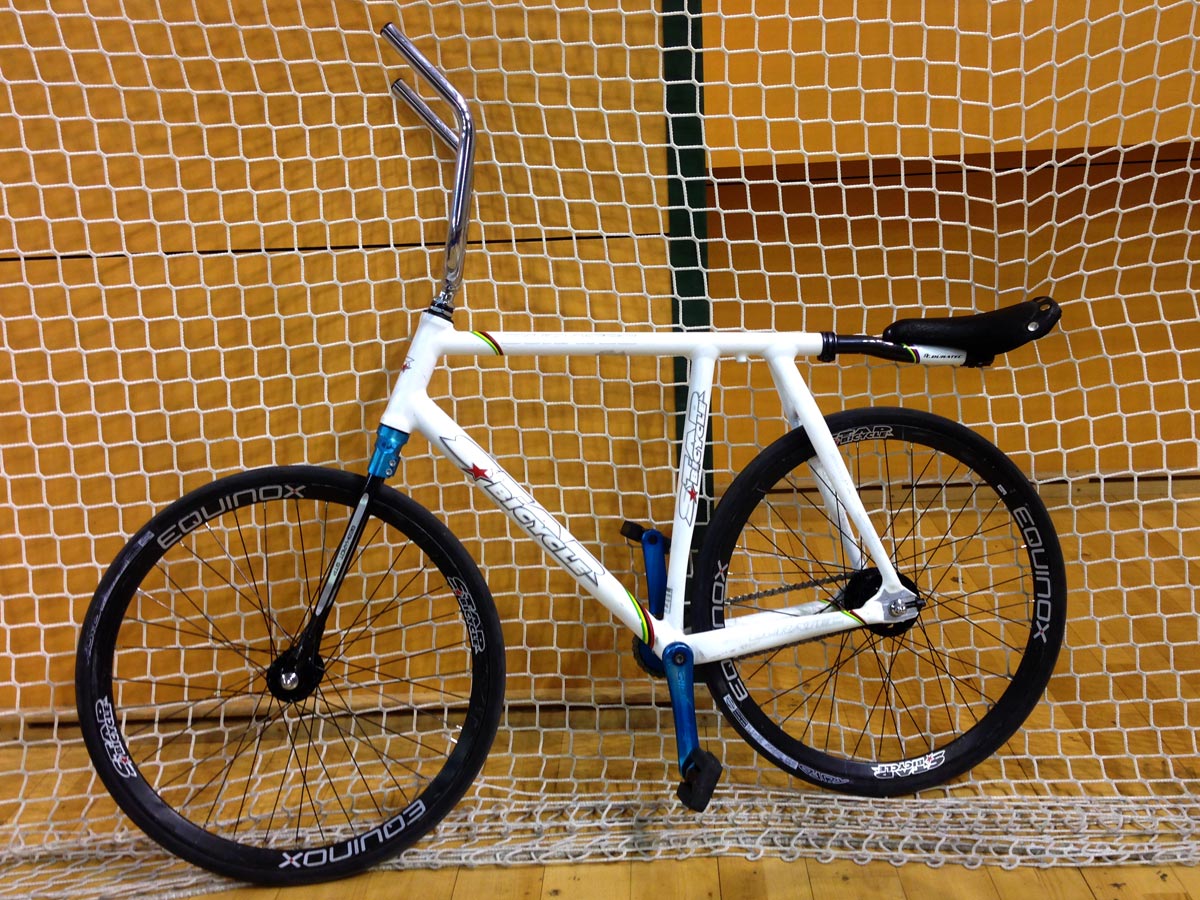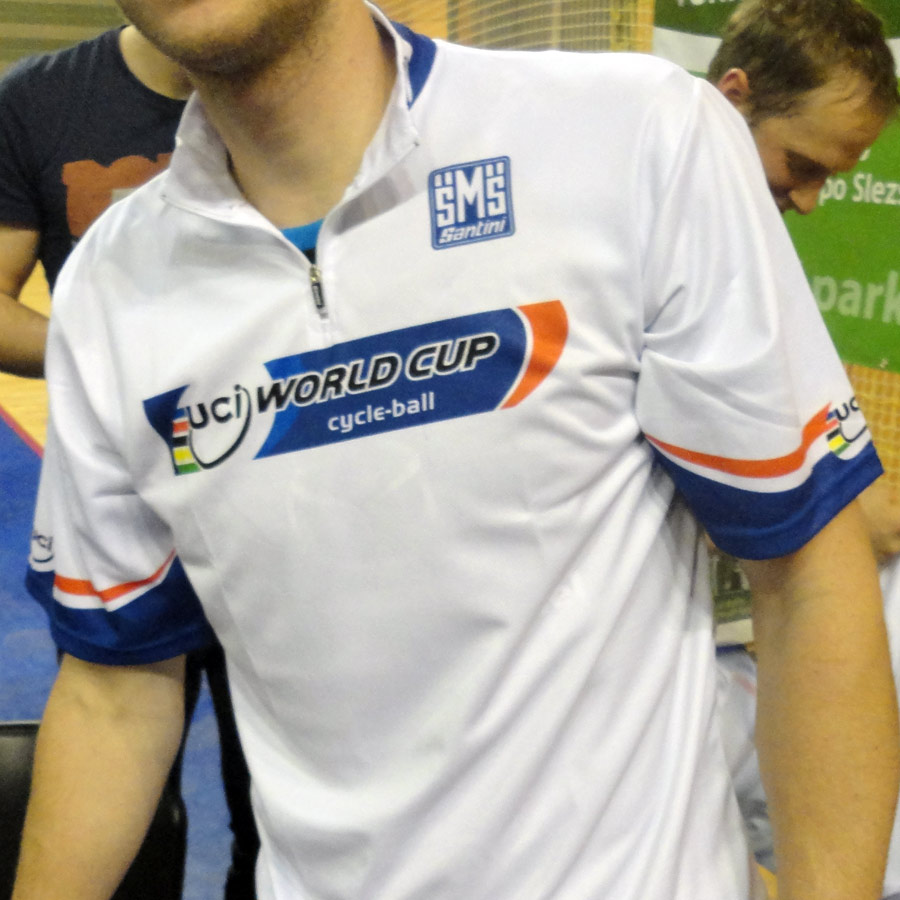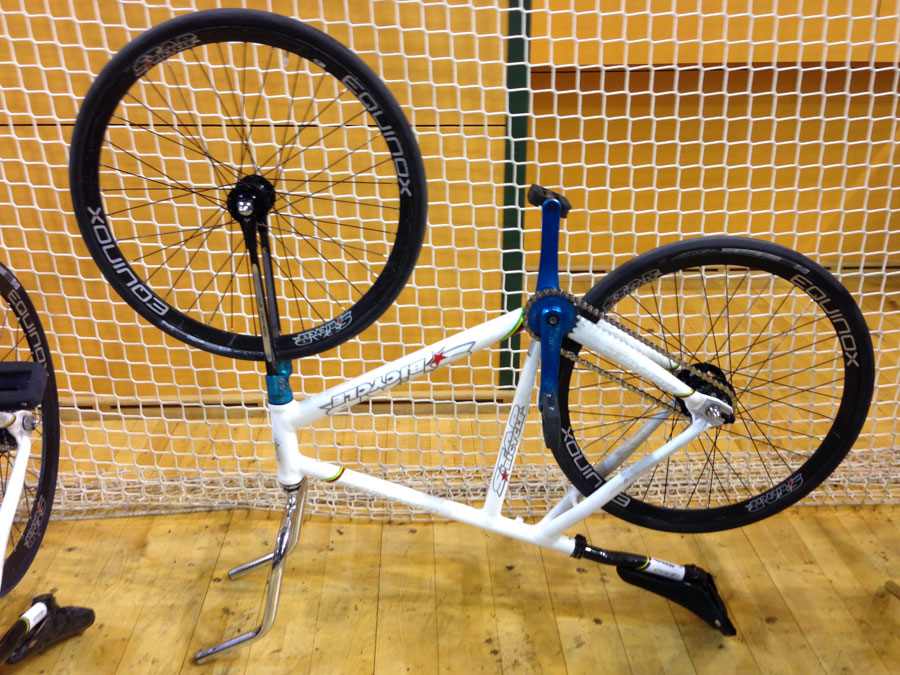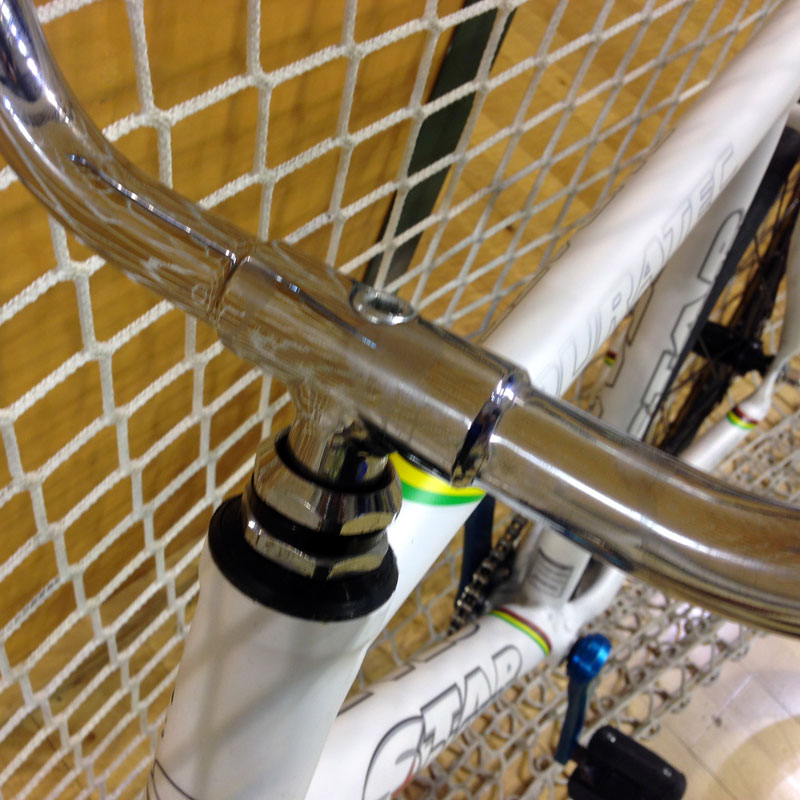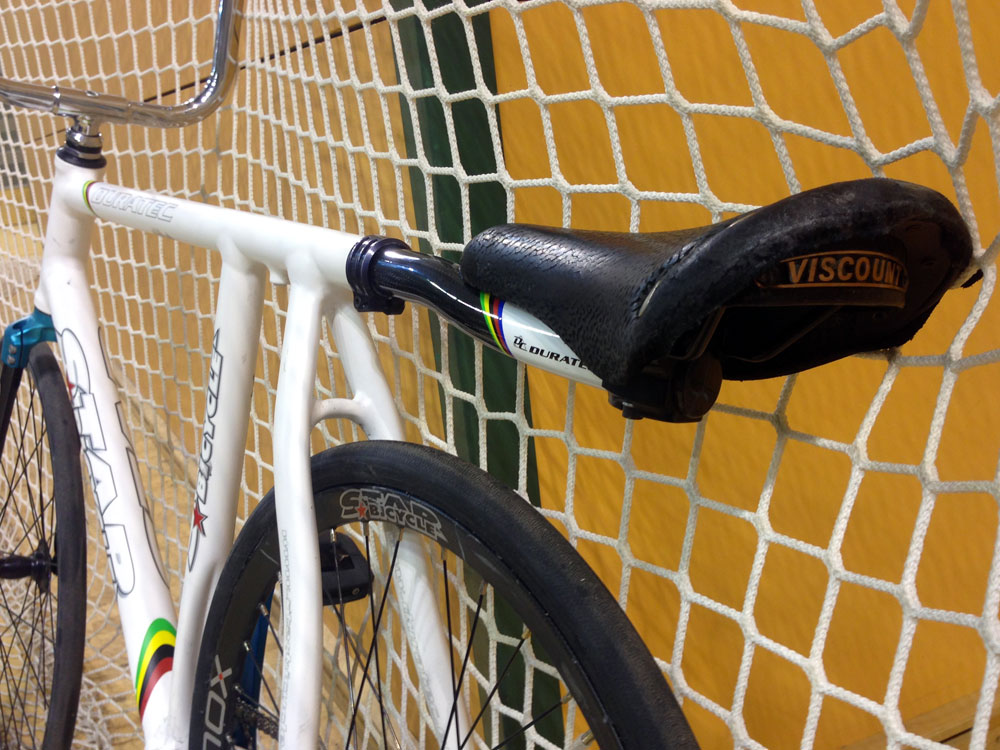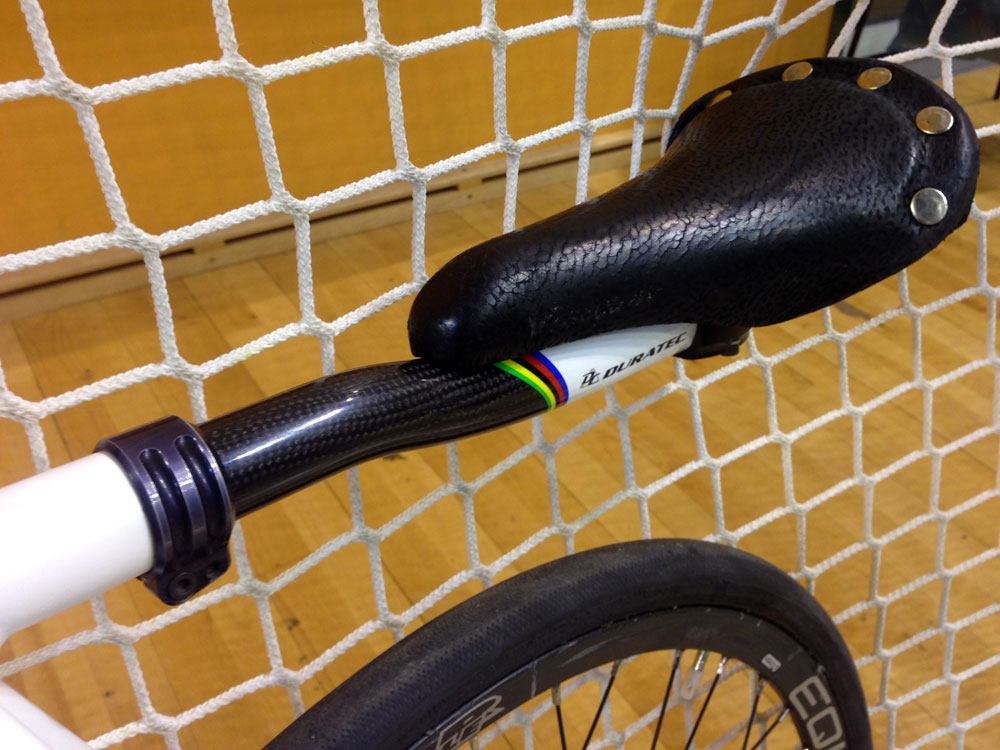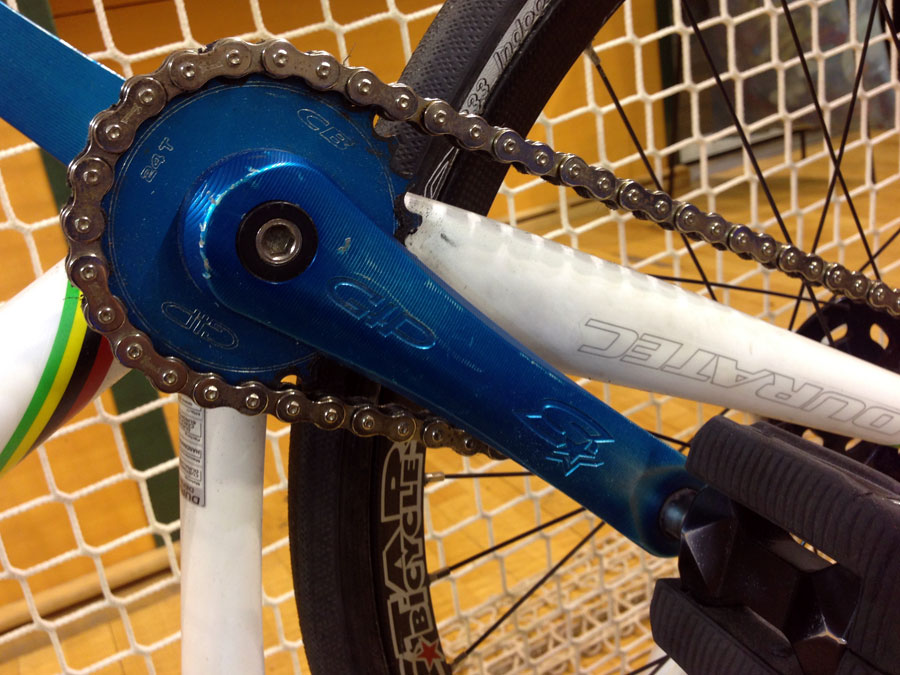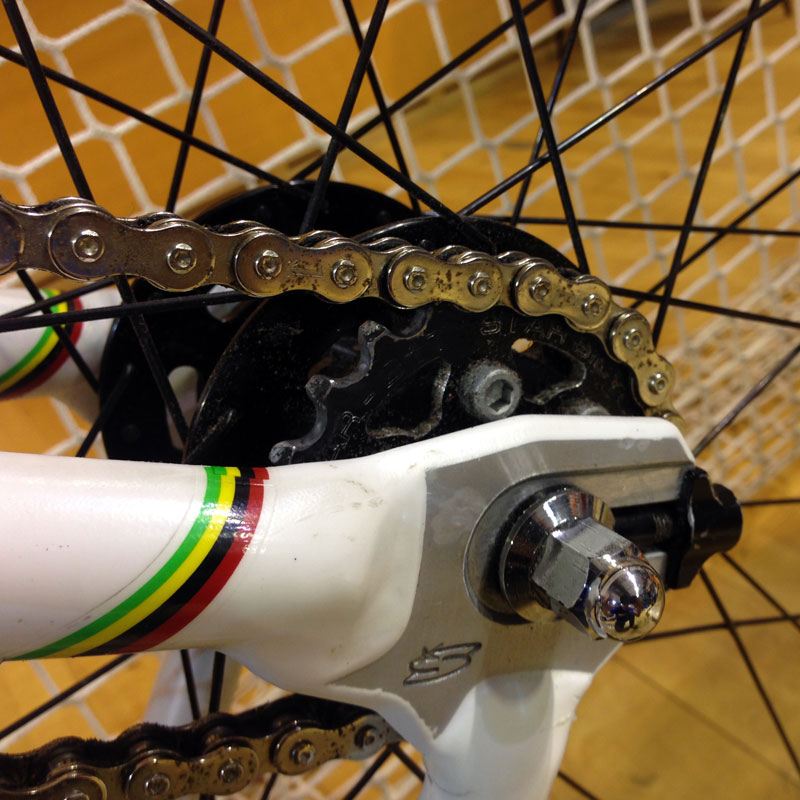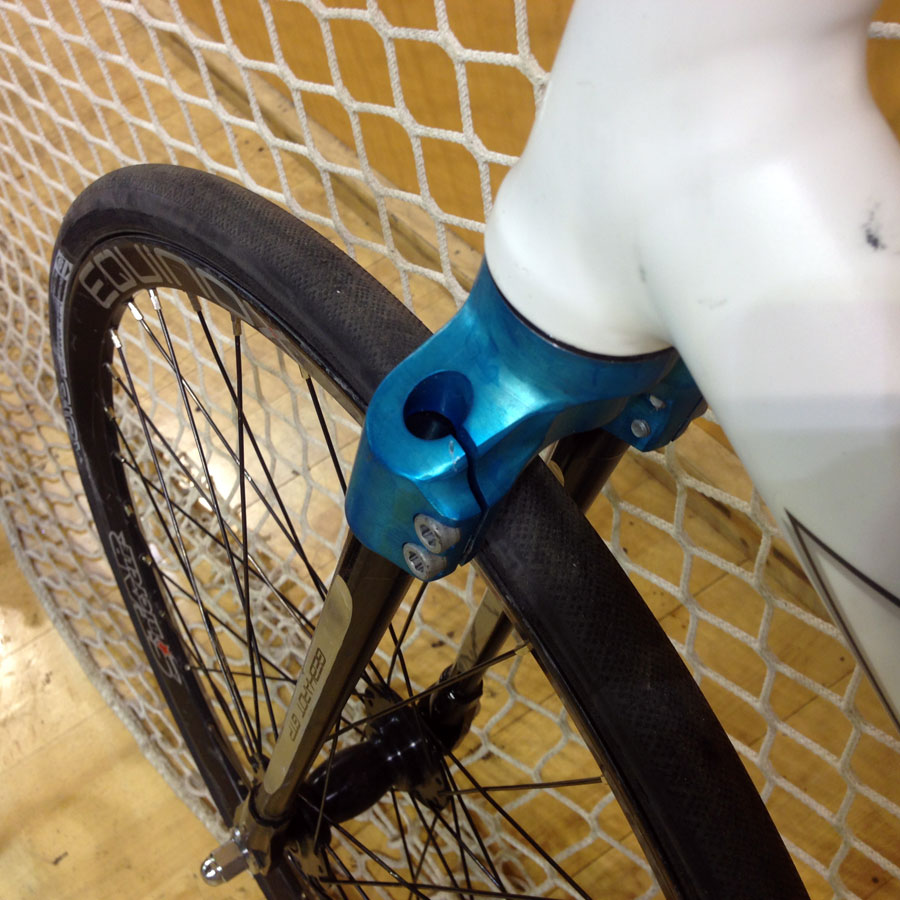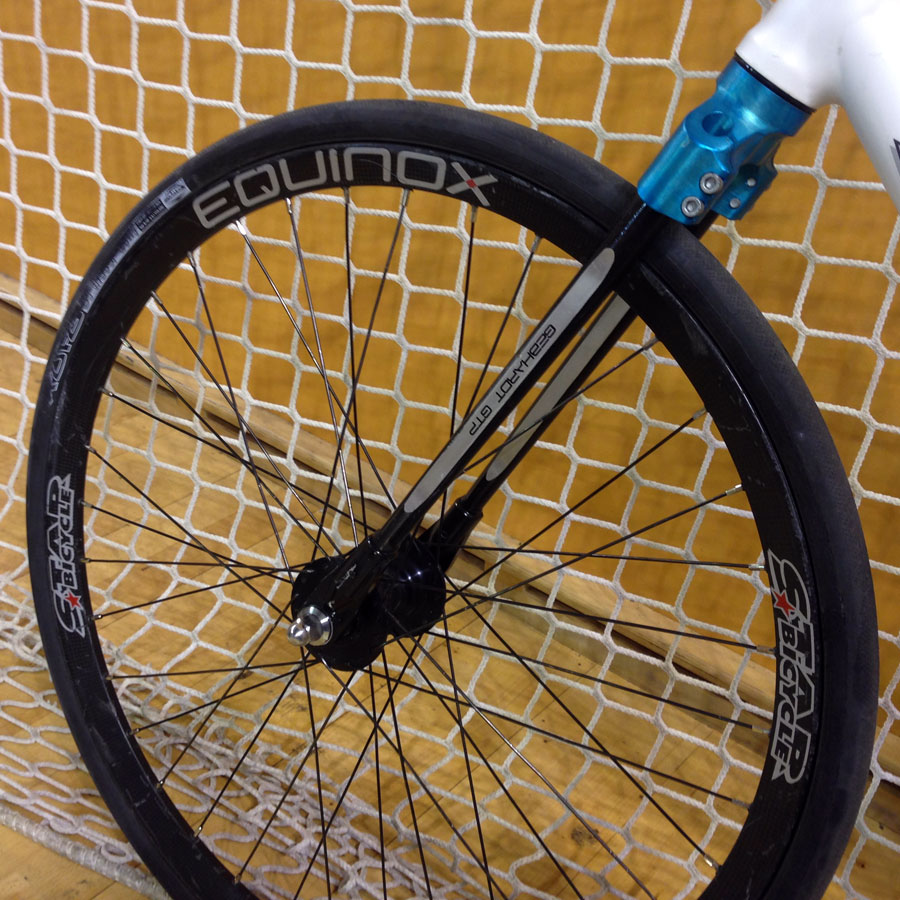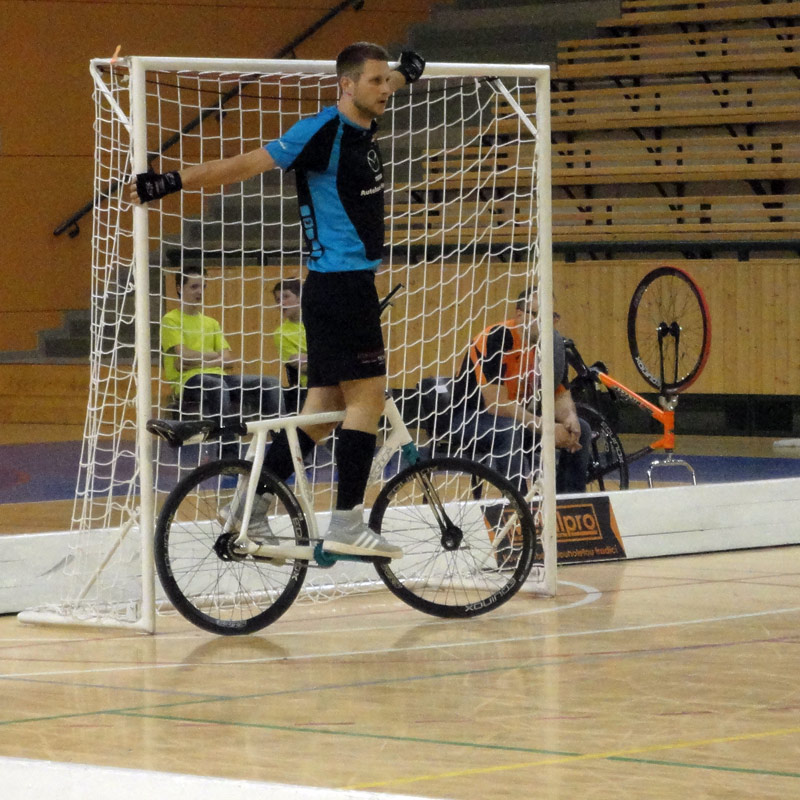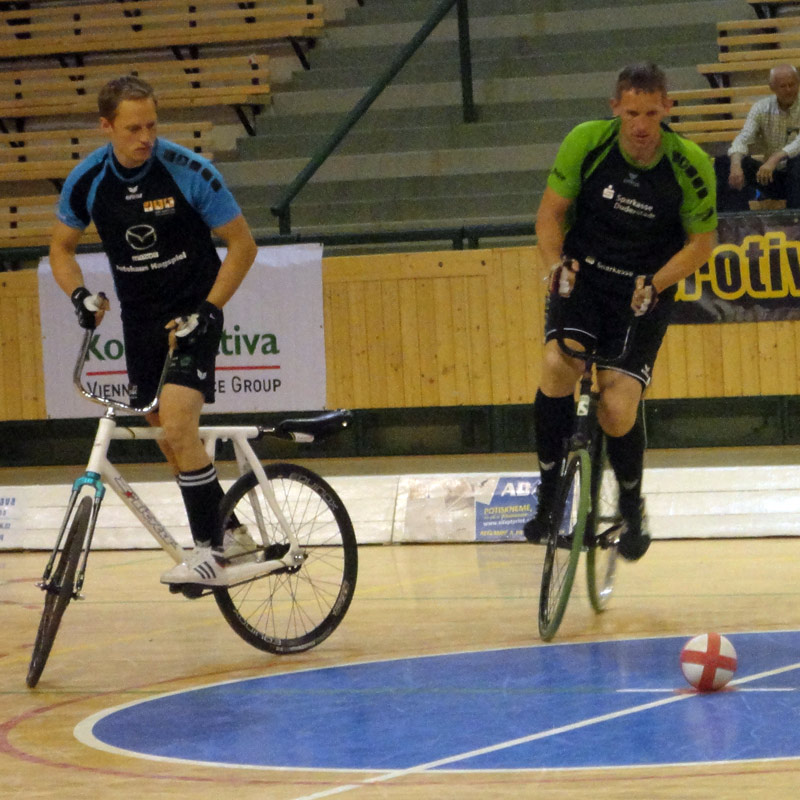So as we head into the next month or so of featuring Pro Bike Checks from the first mountain bike rounds of the UCI World Cups in XC and DH, I thought I’d start off with something a bit more unique. Last weekend we headed out to the first UCI World Cup in the indoor cycling sport of Cycle Ball in Plzen, Czech Republic, where ten 2-man teams from six nations competed in the somewhat bizarre but amazingly impressive show of balance, bike control, and precision. The Austrian pair of Simon König and Florian Fischer on team RC Höchst 2 dominated in everyone of their tournament matches on the day on their Star Bicycle Radball Premium+ bikes.
Hop past the break for some more of these purpose-built bikes….
First off, yes, Cycle Ball World Cup leaders earn the white UCI jersey, and here it is a nice loose fitting polo style. König and Fischer were happy to don it on the podium, but afterwards it came off and quickly ended on the backs of their happy mechanic.
Important note: in a break with classic cycling convention, it is perfectly acceptable to store your Cycle Ball bike upside down. These are pretty heavy bikes (something like ~15kg) to withstand brutal treatment, and with relaxed head angle and straight, no-rake forks, they are not too stable without a rider. I actually had a tough time standing one up to take some shots, so they end up upside down a lot on the unwrapped bars and often unused saddles.
It isn’t every day you see a large steerer and internal headset on a bike with a threaded interface. But these bikes are certainly unique, with no-offset bars integrated with a quill and a nice slippery chrome finish to let the riders twist the bar back and forth with little friction.
The aluminum frames of Swiss company Star Bicycle are actually made in the Czech Republic by Duratec, before getting shipped to Switzerland to get built up.
While Cycle Ball seems to be most popular in German-speaking countries, all of the three major bike companies build their frames in the Czech Republic, most likely a result of years of Czechs excelling in the sport a couple decades ago.
As is pretty obvious from the photos, they don’t have a traditional shaped frame, but rather use an extended toptube as something of a seattube and a seatpost that extends horizontally over the rear tire. This lets the rider move their center of gravity over the rear wheel to lift the front tire to shoot the ball. Most riders use a large traditional saddle like this riveted Viscount, but they actually spend very little time sitting on it.
Drivetrains are fixed gear with near 1:1 ratio. This bike has a Czech Gebhardt machined aluminum crank with a 24T chainring that is bolted to the arm from the rear.
It also uses a bolt-on fixed 21T cog also from Gebhardt out back. The chain is apparently from a moped supplier.
The forks also from Gebhardt use a machined aluminum crown with replaceable steel legs. Due to the stress of shooting the ball with the front wheel, the forks need to be rebuilt with new legs almost every 3 months, hence the modular construction.
All Cycle Ball bikes use tubulars and 36-48 spoke wheels, most often with heavy aluminum rims. This bike is an exception and uses carbon rims, found only on a very few riders’ bikes. The rims aren’t that much lighter, but seem to be able to withstand impacts a bit better. Wheels take a lot of abuse in this sport, and we saw some rims with spoke nipples pulling through them that scared us. But spokes break almost constantly from impact, and with 48 on a rear wheel there are some to spare.
This 3600CHF (~3500€/$3800) World Cup-winning bike from Star Bicycle seem to essentially be the pinnacle of Cycle Ball technology.
But in a sport where durability trumps any attempt at lightweight or new tech (and the ability to easily replace the parts that get destroyed regularly is a valid issue), there are also a bunch of lower cost and traditional steel bikes even at this high level of competition.
We’ll do another feature in the coming weeks that looks at the two other major bike brands showing up at the World Cup level, and have more of a look at what sets different bike setups apart for this unique aspect of cycling.
